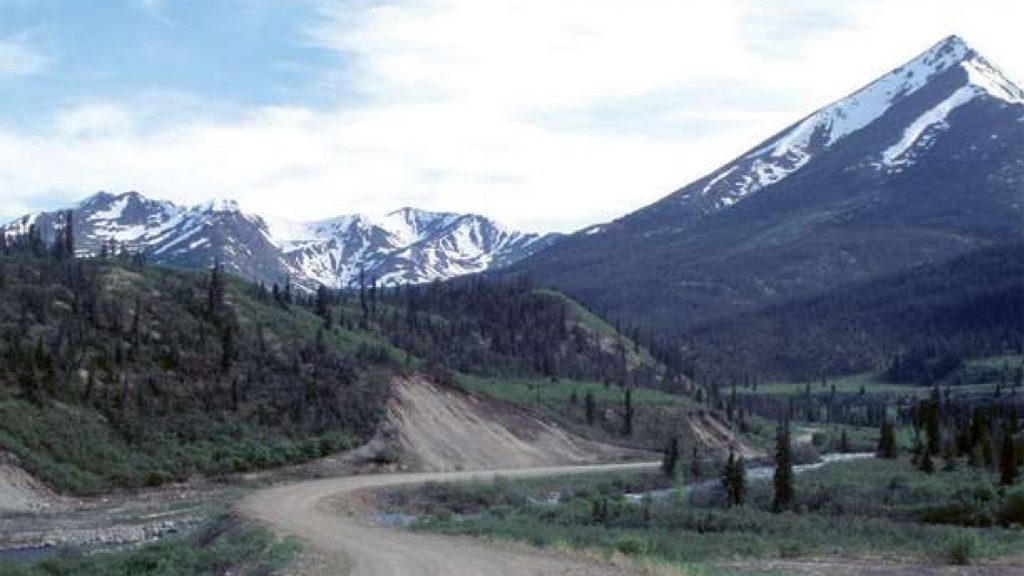Construction work is expected to begin this year on at least two major components of the Yukon Resource Gateway Project (YRGP), a $468-million venture that is taking place over several years to upgrade existing road infrastructure in the territory and provide more reliable access to mineral-rich areas.
The Government of Yukon has reached agreements with First Nations communities to proceed with upgrades to a 200-kilometre stretch of Nahanni Range Road in the southeast part of the territory as well as construction of a road for mining traffic that will bypass Carmacks in the central part of the territory.
An agreement-in-principle has also been reached with Ross River Dena Council for bridge replacement and improvements to the North Canol Road in the area as well as construction and resurfacing of about 60 kilometres of the Robert Campbell Highway. The project has an estimated capital cost value of $71 million.
The YRGP is one of the most significant infrastructure programs ever undertaken in the territory and proposes upgrades to about 650 kilometres of existing resource roads in the Dawson and Nahanni ranges. The projects are bankrolled by governments and the mining industry. The federal government is contributing $248 million, Yukon is providing $112 million and the mining industry is kicking in $112 million.
Upgrades will be made to the all-season Nahanni Range Road from Highway 4 between Ross River and Watson Lake to the border of the Northwest Territories. The $17-million project involves two bridge replacements and one bridge rehabilitation as well as improvements to lines of sight and road geometry.
The bypass at Carmacks, meanwhile, will be a new 50-kilometre road that will link to Freegold Road, which is maintained only in summer, and connects to Casino Road and a major copper and gold mine proposal. Preliminary planning and design work are already underway on the estimated $26.7-million project.
Logistics of both projects will be tricky as they are in remote areas and contractors have just a four-month window between June and September to work.
“A main issue is the length of the construction season,” explains Paul Murchison, director of transportation engineering for Yukon Highways and Public Works. “When it decides to cool off it’s a pretty quick switch typically.”
As a result, contractors doing roadwork in the Yukon must plan well ahead, make sure suppliers and trades are on the same page and be ready to roll quickly when called upon.
Murchison says it takes a lot of organizational work and planning to ensure building materials arrive when workers need them.
“From fuel delivery, to cooks in the camps, and to the supplies, even the logistics of moving equipment into our sites has to be considered,” he notes. “Right now, we’re in a time period where we’re dealing with spring restrictions on our roads. From late in April and May and into early June heavy loads are restricted on our network based on ground conditions and because thawing weakens the foundation.”
For the Nahanni Range Road upgrades, a camp for workers will be set up along the route and supplies will be shipped in along existing thoroughfares.
“In terms of the logistics of moving materials into the site, we are fortunate in the Yukon in that we do have a road network connecting all of our central roads,” says Murchison. “In the case of the Nahanni Range Road, once a contractor has set up camp the contractor, through our road network, has access essentially to British Columbia, Alberta and the rest of Canada to move materials that can’t be sourced locally to the site.”
While there is road access, they are not always suitable for large trucks and the more remote the site the more difficult it is to send in a large vehicle as the roads get narrower and are often not as truck-friendly.
“Once you get close to some of these sites you go from being on a hard-surface road to a gravel road and the gravel road in some of these areas becomes essentially a one-lane gravel road so that’s the issue,” says Murchison.
A spokesperson for Yukon Highways and Public Works says contractors are in charge of the logistics of moving materials to the sites.
To ensure the YRGP projects move ahead as planned, the territory tries to award tenders early in the year so that contractors can get their heavy equipment to a site before spring weight restrictions are put in place. The government also looks after environmental permits for work camps so contractors can hit the ground running.
Apart from the weather and logistics, projects are also complicated by the fact that all components of the YRGP are within traditional territories of First Nations communities. Yukon Highways and Public Works says no funding will be released for projects without agreement of the affected First Nations communities.
“Thoughtful and meaningful agreements take time,” a department spokesperson said in an email. “The conversations we’re having with Yukon First Nations are important and help foster trust between our organizations.”











Recent Comments
comments for this post are closed